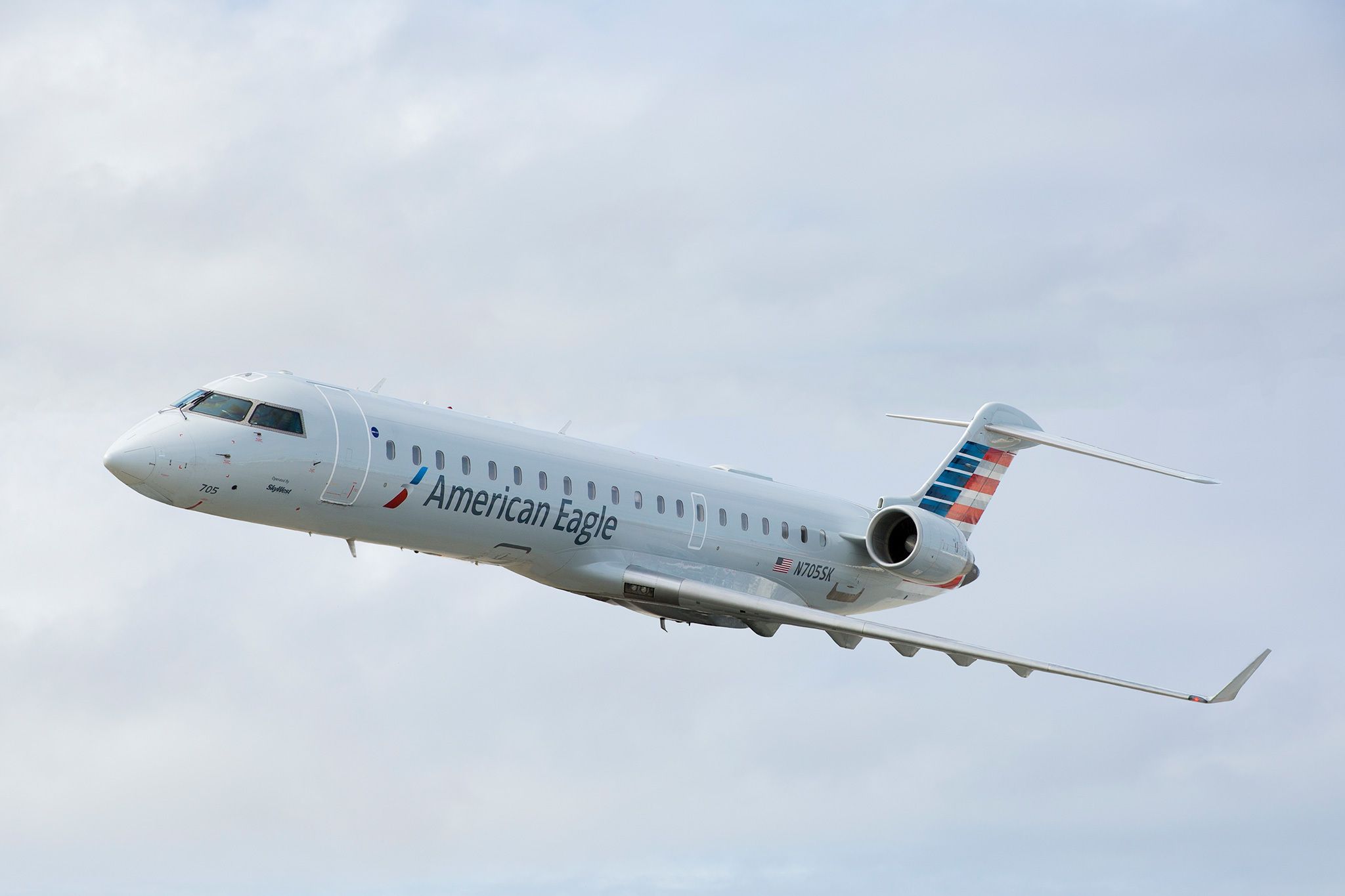Summary American Airlines retrofitted its first plane with Intelsat's multi-orbit internet, boosting connection speeds and capacity for passengers. The system uses both GEO and LEO satellites for strong coverage, with plans to switch dynamically between the two in the future. Intelsat has contracts with major airlines for similar upgrades, with American Airlines leading the pack in adopting the new technology.
The first American Airlines plane retrofitted with multi-orbit internet service is officially back on the line. It is a Bombardier CRJ-700 operated by SkyWest Airlines for American Eagle. WiFi from Intelsat According to PaxEx.

Aero , the CRJ-700, registered N611SK, arrived for service at Consortia Aerospace in Gainesville, Florida. Just over 50 days later, the aircraft is back in service. Yesterday, it made its first flight since the installation from Chicago, Illinois, to Aspen, Colorado.
The flight arrived left the gate at Chicago O’Hare International Airport (ORD) on time. However, it had to taxi back to the gate and, as a result, took off approximately three hours later. It arrived at Aspen-Pitkin Country Airport (ASE) two hours and 42 minutes later.
According to ch-aviation , the aircraft is 23.39 years old and was delivered to SkyWest in March 2001. It seats 56 passengers, with 16 economy plus and 40 economy seats.
The aircraft is now fitted with the Intelsat multi-orbit solution, which features the Gilat/Stellar Blue Sidewinder terminal. The system will give passengers access to wireless internet on domestic and international flights and is expected to drastically increase the regional carrier's fleet's connection speeds and bandwidth capacity. The move is part of the deal American Airlines signed with Intelsat in December last year to have its regional fleet fitted with the solution.
The hardware will be fitted on its two-cabin regional aircraft, which include approximately 250 Embraer E170 jets and 220 CRJ-700 and -900 jets. The system Intelsat’s multi-orbit solution communicates with both GEO (Geostationary Orbit) and LEO (Low-earth Orbit) satellites. The former includes many of Intelsat’s satellites, while the latter communicates with Eutelsat’s OneWeb constellation.
Unlike GEO satellites that must always orbit along the equator at high altitudes, LEO satellites orbit around at a relatively low (between 160 to 2,000 km) above the earth. These satellites don’t have to follow a particular path around the planet, and as a result, a constellation of LEO satellites can provide greater coverage. The system's ability to connect to both types of satellites ensures a strong and usable connection at all times.
It is unclear if this functionality is available currently, as the companies previously stated that the implementation would start with only GEO satellites and then transition to LEO constellations before being able to switch between the two dynamically as the situation calls for it. Simple Flying has contacted American Airlines for confirmation regarding the system's capabilities. Intelsat Intelsat has secured contracts with three of the five largest regional jet upgrades.
Alaska Airlines committed early last year and was supposed to be the first to get the upgrade, but American has beat them to the punch. Air Canada also committed in the fall of last year. It also signed a deal with Aerolíneas Argentinas for the ESA offering in July, showcasing that the system is also an option for international carriers.
Delta Air Lines went a different route and signed with Hughes, a competing first, last month in its bid to bring high-speed WiFi to passengers. United Airlines has yet to choose a provider for its satellite upgrade but is expected to join the list soon..



















